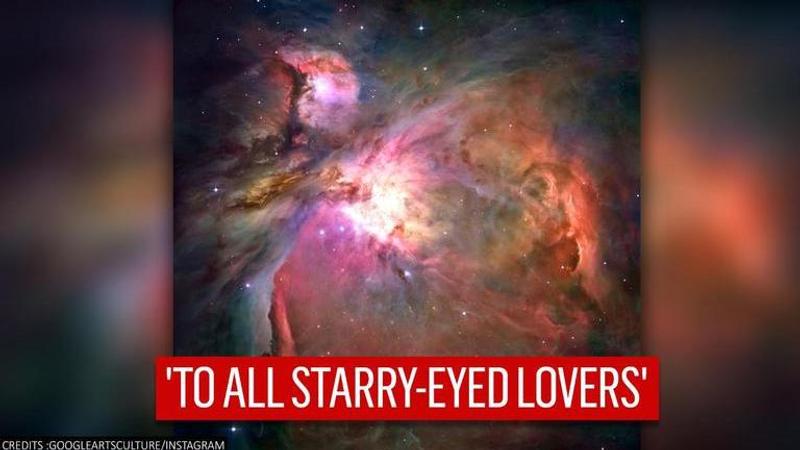Published 14:01 IST, February 15th 2021
Google shares stunning images of stars and nebulae on Valentine’s Day, take a look
On the occasion of Valentine’s Day, Google Arts & Culture took to Instagram on February 14 in a bid to dedicate a post to the “starry-eyed lovers”.

On the occasion of Valentine’s Day, Google took to Instagram on February 14 in a bid to dedicate a post to the “starry-eyed lovers”. While taking to the social media platform, Google shared incredible images of stars and nebulae to wish people on the day of love. In the caption, Google Arts & Culture wrote that the pictures were originally posted by NASA. Google shared four stunning images to “make the heart flutter” and so that people can “enjoy night skies filled with colour”.
‘To all starry-eyed lovers’
The caption of the post read, “Happy Valentine’s Day to all the starry-eyed lovers. Tag someone who makes your heart flutter. Then swipe left together to enjoy night skies filled with color”. Further, Google informed the images include Orion Nebula, Starry-Eyed Hubble Celebrates 20 Years of Awe and Discover, The Crab Nebula, and the Hubble Hotbed of Vigorous Star Formation.
It is worth noting that the Orion Nebula is nearly 1,344 light-years away from the Earth and its basically a cloud of Hydrogen gas suspended in outer space. It is the gases of this nebula that later act as the initial building blocks by which new stars are eventually born. The Crab Nebula is 6,523 light-years away from Earth. The Hubble Space Telescope of NASA that captured the data and sent it back to Earth was deployed 30 years ago by the space shuttle Discovery. The Hubble Hotbed of Vigorous Star Formation, on the other hand, is one of the most active galaxies and is located about eleven million light-years away in the constellation of Camelopardalis.
Meanwhile, since being shared just a few hours ago, the Google post has garnered over 1,300 likes. The numbers are still increasing and netizens have shared heart emojis to showcase their appreciation for the post.
Updated 14:01 IST, February 15th 2021





